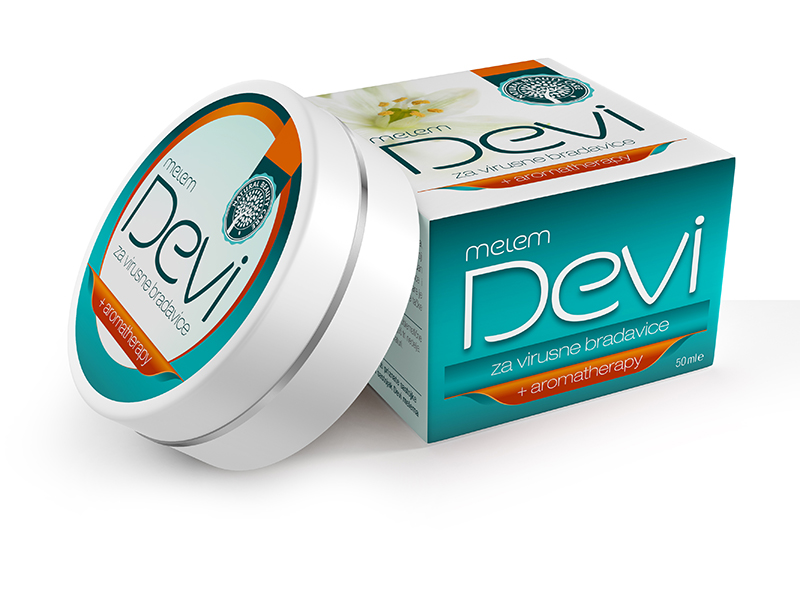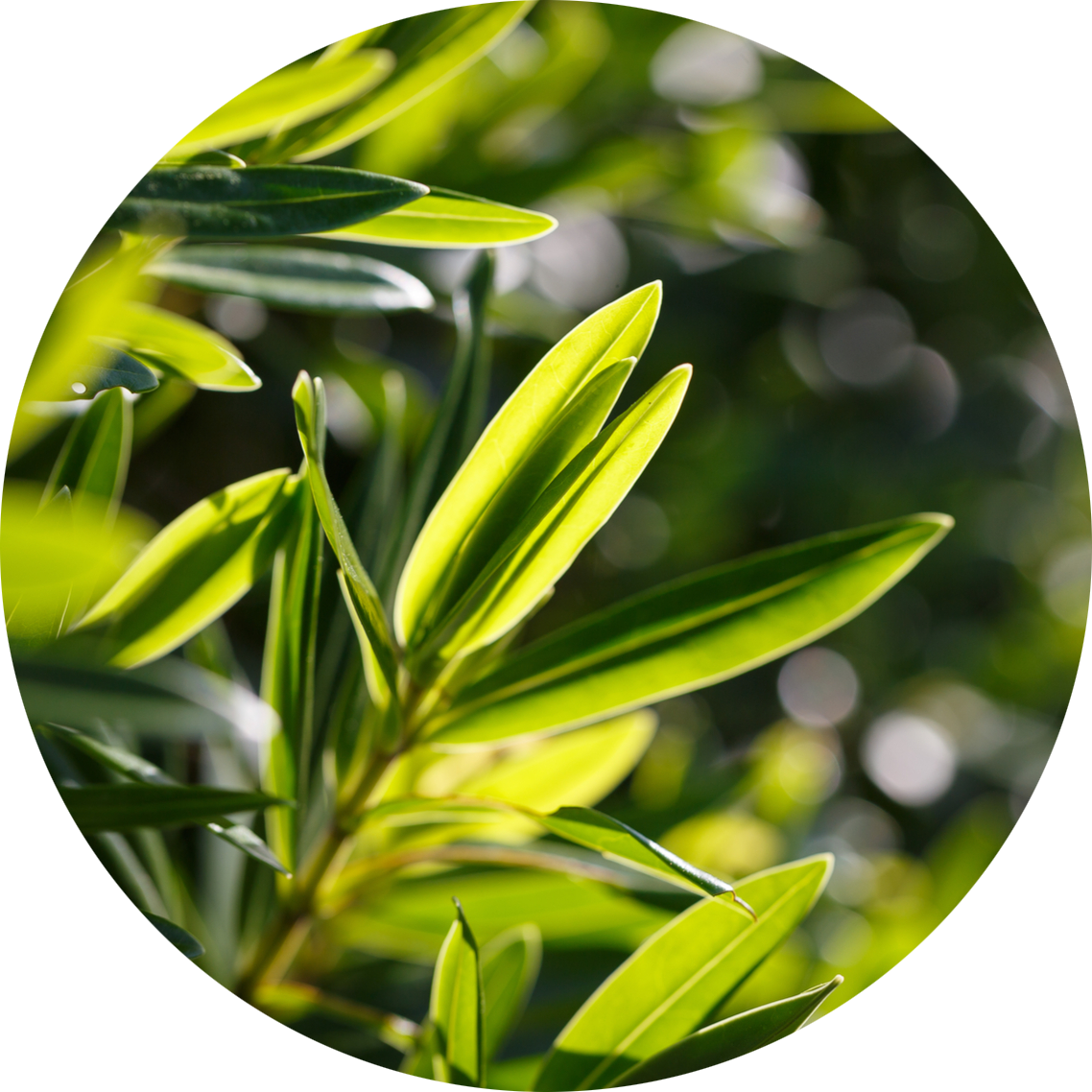(Melaleuca alternifolia)
One day, the beautiful Princess Eelemani had to set off and leave behind her sweetheart, her Bundjalung people and the wild coasts of Eastern Australia. The journey was long and arduous, through unknown lands, and Eelemani was worried that she would not be able to find her way back home. That is why she pleaded with the God of the Earth and Planets for help; the god sowed seeds in the fertile land along the entire path that the princess had travelled and plants with succulent leaves sprouted from them.
The plant called melaleuca enabled the princess to find her way back home, but also helped her people to overcome many diseases centuries later. They used to extract oil from the succulent leaves and used it to dress wounds, inhale its beneficial vapour to treat coughs and colds and soothe insect bites. The place where this plant grows in abundance is still called Bungawalbin in the Aboriginal language, which means “the place of healing”. When Captain Cook arrived in Australia he observed the locals prepare a therapeutic malaleuca infusion and called the plant tea tree.
Thereafter Malaleuca alternifolia proved its therapeutic qualities in different European laboratories: scientists came to the conclusion that it is capable of killing viruses, bacteria and fungus. Tea tree oil has become an inevitable item used in many households not only in Australia, but throughout the world; Australian soldiers used to carry it on them in the Second World War. When the use of antibiotics became widespread in the mid-20th century, this plant fell into oblivion. However, something natural and so beneficial cannot sit in the shadow for a long time.
TEE TREE OIL – GUARANTEED FUNGUS-KILLER
Tea tree oil has a characteristic, strong odour and contains terpinene, a very strong fungicide that has the power to prevent the growth of over ten types of fungi and bacteria, including Staphylococci, Escherichia coli, Klebsiella and Candida. That is why tea tree is very effective in treating skin diseases, such as acne, herpes, inflammation of the oral cavity, fungal nail infections, athlete’s foot, dandruff and, as the old Aborigines knew, is excellent to treat insect bites. Some studies have even proven that it has the power to kill cancerous skin cells.
The effect of tea tree in Candida albicans, Candida glabrata and Saccharomyces cerevisiae has been proven in studies. This medicinal plant systematically destroys the membrane of the fungus due to the synergistic effect of its components and thus destroys it more efficiently and permanently than synthetic drugs, such as fluconazole. That is why today it is seen as an excellent solution for candidiasis, which is otherwise difficult to treat. Almost all components in tea tree oil have anti-fungal action, and dermatophytes are especially susceptible to them, precisely the fungi that like to settle around the nails or hair.
This essential oil has also been proven to be effective against Staphylococcus aureus, which adapts very quickly and becomes resistant to antibiotics. Staphylococcus likes to inhabit the skin and mucous membranes, as well as wounds after surgery, and thus creates infections that can very easily become complicated. It often causes infections on the skin, such as impetigo, boils, folliculitis, abscesses, one of the most severe of them being a malignant staphylococcus infection of the face. That is why the report of the European Medicines Agency describes tea tree as being effective for cleaning dirty, festering and infected wounds, providing help for wound healing and for irritations of mucous membranes.
One study proved that tea tree oil effectively kills pathogens such as Enterococci, Klebsiella pneumoniae, Pseudomonas aeruginosa and Stenotrophomonas maltophilia in less than 60 minutes.
When combined with lavender, tea tree oil is even more effective against dermatophytes; the synergy of these two herbs effectively combats fungal infections of the nails and hair roots. Scientific research has also recognised it as an effective remedy for psoriasis, bearing in mind its anti-inflammatory properties.
TEA TREE AS AN ANTIOXIDANT
In addition to its effective antibacterial action, Melaleuca alternifolia is also a powerful antioxidant. This plant is effective against strains of pathogenic bacteria such as E. coli, S. aureus, and P. aeruginosa and gram-positive bacteria. Hydrophobic terpenes from the plant have a strong effect on the lipid membrane in pathogenic organisms, weakening it and thus destroying the cellular energy of the pathogen. Compared to known antioxidants such as vitamins E and C, tea tree oil has great potential for destroying free radicals that induce inhibition of lipid peroxidation, which is the main cause of the formation and growth of tumours and cancer.
Tea tree can also be used in the home, for cleaning and disinfection, as a moth repellent and to remove the mould. It can freshen bed linen and be used to keep footwear hygienic, or it can be added to hand disinfectant gels. It is especially useful for disinfecting hands in hospitals and healthcare facilities; it has been found that hand washing products that contain only five per cent of tea tree oil and 10 per cent of alcohol have a better antiseptic properties than soap. A few drops of this oil in half a glass of water is an effective mouthwash that disinfects the mouth, eliminates bad breath and prevents gingivitis. A mixture of about twenty drops of tea tree oil, a third of a glass of water and half a glass of apple cider vinegar is an excellent natural product for cleaning household surfaces.
TEA TREE – FRIEND OF THE FEET
Tea tree is the best friend of our feet. Apart from removing unpleasant smells, this beneficial oil prevents bacterial and fungal growth and is excellent against viral warts. It reduces foot sweating, prevents and removes nail fungus, and is of particular benefit to sportsmen and mountaineers who spend loads of time wearing sweaty shoes. The effectiveness of tea tree oil against athlete’s foot has been proven in a number of clinical studies, as well as its ability to remove dandruff when added to hair shampoos. It is also excellent as an insecticide and can be used to protect both humans and animals; it also helps to treat insect bites and to prevent allergic reactions. If applied to the armpits, it acts as a natural deodorant, eliminates unpleasant odours and prevents the spread of bacteria in the sweat.
Tea tree works wonders for the face as well. Those who suffer from acne will be especially pleased with this powerful remedy for these unpleasant inflammatory changes on the skin. Studies have proven that tea tree significantly improves the condition of acne-prone skin. Only five per cent of tea tree oil in a preparation is enough to keep acne at bay. It also helps with dry skin: a few drops of tea tree oil added to a moisturising cream effectively hydrates the skin.
After reviewing all its fantastic properties, it is no wonder that tea tree oil is an indispensable ingredient in two Devi balms: for heels and viral warts. Devi balm for heel care treats rough and cracked skin on the heels and prevents the growth of fungus and unpleasant smells. Devi viral wart balm dries warts and removes them painlessly and permanently. There is also Clear Skin Gel, for acne prone skin. With the wisdom and experience of ancient peoples, nature and Devi creams our feet will be healthy!



